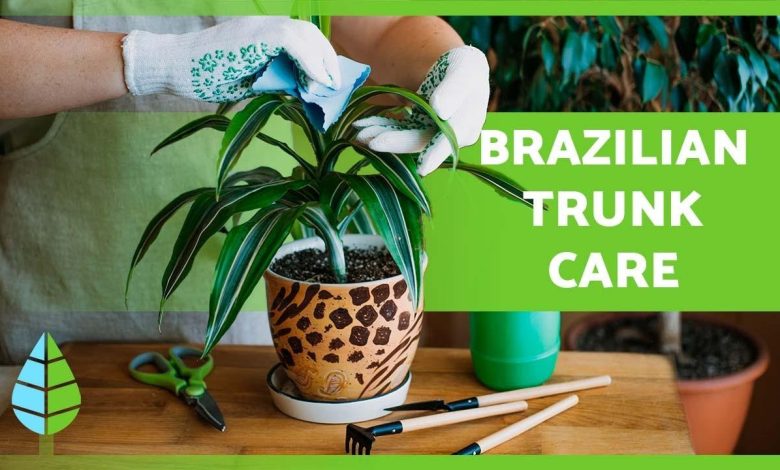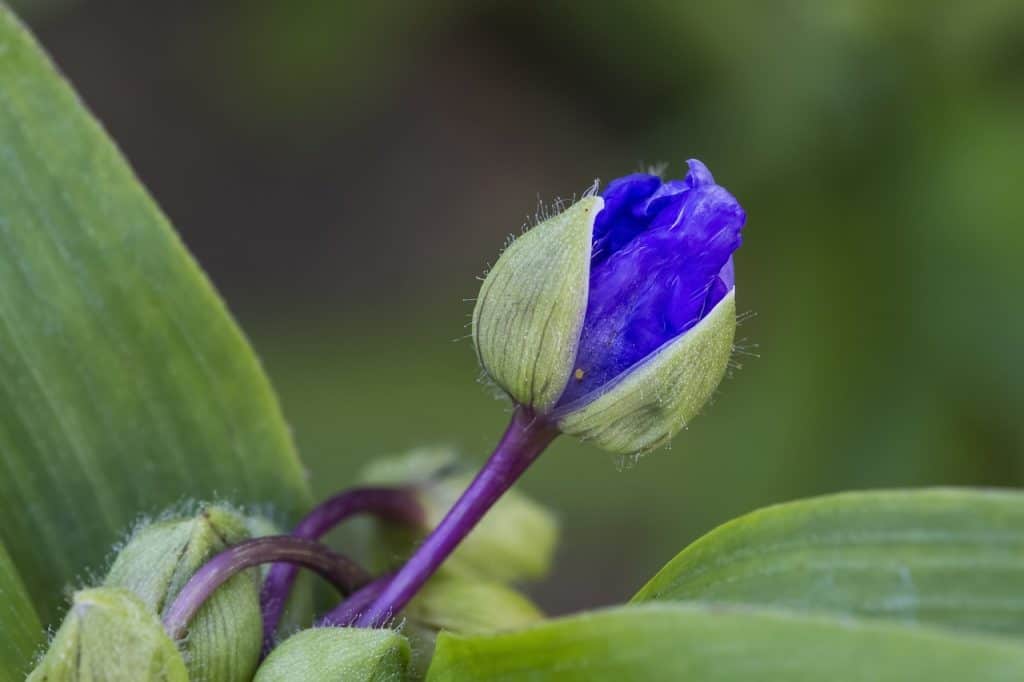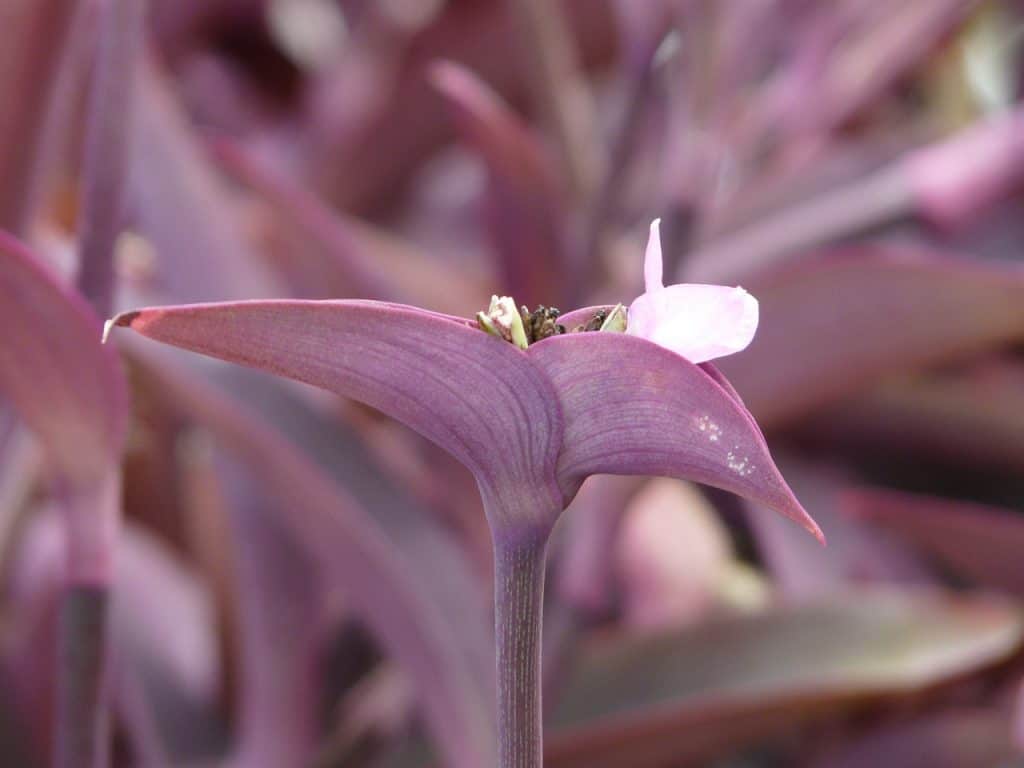Grow Tradescantia (Brazilian Trunk) in your Garden: [Irrigation, Care, Pruning and Substrate]

Another noble plant that can thrive in hanging pots or at ground level, given its creeping condition, is the Tradescantia (Tradescantia pallida) better known as glitter or love of men.
It does not need more attention or care.
Important points when planting Tradescantia:
- Family? Commelinaceae.
- Temperature? Minimum values between 12 to 15°C will be enough for it to develop. And low humidity.
- Light? Good natural light is essential in its long existence.
- Substratum? Use liquid fertilizers every 15 days in the irrigation water.
- Irrigation? In a pot, fluid drainage is essential so that the water does not puddle the substrate.
Originally from Mexico, it has had an amazing ability to cross borders and multiply throughout the world with great adaptability to environments different from its place of origin.
 It is one of the favorites when it comes to achieving colorful contrasts, thanks to its purple leaves with edges in a unique pinkish tone and some very summery pink inflorescences.
It is one of the favorites when it comes to achieving colorful contrasts, thanks to its purple leaves with edges in a unique pinkish tone and some very summery pink inflorescences.
Its hanging cut can be used indoors, as long as you use pots to create upholstery effects in naturally lit areas.
Ideal for beginners in the fascinating world of gardening, the Tradescantia is low in maintenance. It doesn’t ask for much.
It is really versatile.
It responds very well if you subject it to hanging growth, or as a «ground cover» specimen in your home garden, creating perfect carpets with its expansive foliage of roots that sprout between its nodes, which allows it to adhere well to the surface it invades..
The most popular species, the tradescantia purpurea, the zebrina, the spathacea virginiana or the sillamontana, are loyal to their iron strength.
It is also good that you know that there are more than 70 species of this genus,Almost all of them come from the American continent, from Canada, to the north, to Argentina, to the south. Species that have achieved worldwide recognition, given their great ability to interbreed and create hybrids naturally.
There are those who use hormones to stimulate rooting, but in reality its reproduction by cuttings is of a higher response in this plant, especially in the period between spring and autumn.
Temperature
Minimum values between12 to 15°C will be enough for it to develop. And low humidity.
It is so noble that it can adapt to times of drought, given its low maintenance, but it cannot live between snowfalls or temperatures below -3°C.
Light
 Good natural light is essential in its long existence. If this is not the case, its leaves will lose their showiness, they will discolor until they look faded and droopy.
Good natural light is essential in its long existence. If this is not the case, its leaves will lose their showiness, they will discolor until they look faded and droopy.
In short, abundant light to expand, grow and flourish. But it also gets along wonderfully with shadow, as long as it doesn’t last so long.
Substrate and Fertilizer
Use liquid fertilizers every 15 days in the irrigation water, in the spring, if you want to stimulate its beauty with a good fertilizer while the Tradescantia grows.
In the period of rest of the plant, it will be very appropriate to apply fertilizers every three weeks or a little more.
And all the unproductive parts of the plant steal energy from it, so, with great care, carry out a pruning that does not affect the growth of its branches.
Irrigation
potted,The fluid drainage is transcendental so that the water does not puddle the substrate.Between watering and watering, the soil must always be dry, both indoors, as in gardens and balconies.
Always watch this variable, or you will lose a great ally.
only in the summer,water the substrate twice a week and every ten daysor more in the winter period.
And take care of diseases caused by the presence of high humidity, since the stems rot just like its roots, due to a gray mold that also invades its leaves. Eliminate the diseased areas and you will see that it will recover quickly to show you all its purple splendor.
Tradescantia common names
“Traperaba” and “ trunk Brazil ”, “cordobán”, “flotilla”, “sangrinaria”, “yerba de boca”, “cañutillo”, “coítre”, “cojitre”, “pajilla”, “cigarette”, “matalí”, “palo pollo”, “nudillo”, “siempreviva”, “sueldacomsuelda”, “flor de Santa Lucía” and “panamanian”

![Photo of Orange Tree Cuttings: [Grafting, Season, Rooting and Sowing]](https://www.complete-gardening.com/wp-content/uploads/2021/06/naranjo_1612620990-390x220.jpg)


![Photo of Prune Dipladenias: [Importance, Time, Tools, Considerations and Steps]](https://www.complete-gardening.com/wp-content/uploads/2021/06/Podar-Dipladenias-390x220.jpg)